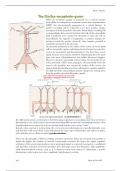Summary
Summary EEG Principles and Understanding Epilepsy
- Course
- Institution
Explore the principles of electroencephalography (EEG) and epilepsy in this comprehensive guide. Learn how EEG recordings reflect brain activity and uncover the mechanisms behind epileptic seizures. Discover the different brain waves observed during wakefulness and sleep, and understand how epil...
[Show more]



